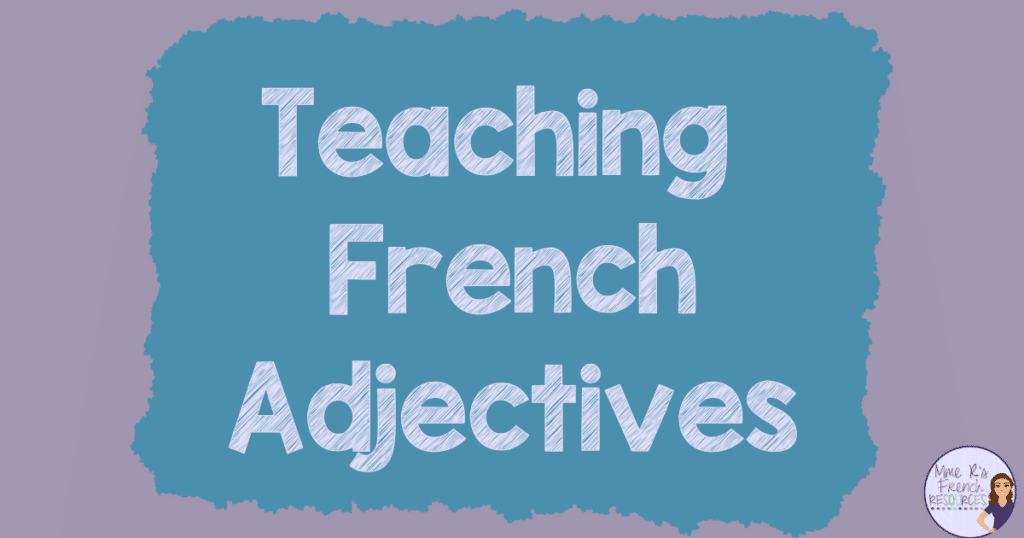
Teaching French adjectives is a really important part of any core or immersion program. Learning adjective agreement well from the beginning sets French students up to perform better on concepts like past participle agreement using être or with preceding direct objects. They’ll get a strong grasp on the importance of gender. In addition, they’ll form good habits from the start.
It is necessary to teach our students to speak and write correctly, but it is overwhelming when we have so many concepts to teach. We teach the lessons, we quiz the students, and we move on to something else. Sometimes we realize that they haven’t fully mastered the concepts. But… we have to keep moving or we will NEVER teach everything that we need to teach! That means we need the most effective ways to teach so they understand it the first time!
Teaching French adjectives in a meaningful way
I have found that while I don’t have trouble Teaching French grammar, it takes so much practice to really make it stick. That means we need to have a lot of fun ways to teach, reinforce, and assess so that no one gets bored, all learning styles are practiced, and students actually MASTER the skills!
My French adjectives bundle has nearly 650 pages of writing practice, games, speaking activities, projects and more. It includes French worksheets, fun games, and engaging speaking and listening activities to teach French colors, adjectives, comparative and superlative adjectives, nationalities, and so much more to make teaching French adjectives fun and engaging!
Here’s a look at some of the resources in my French adjectives bundle.
First, there is a grammar and vocabulary packet, because students need to have thorough explanations. These French worksheets come in full-French and English versions. That means they are great for learning the first time or as a review for more advanced learners. Students get notes and vocabulary pages they can write on and ample practice for the French adjective agreement.
The first half of the packet is in French, and the second half uses English to explain the grammar concepts. When I’m teaching French adjectives to first year classes, I use the English version. I also love to review at the beginning of the year, and I’ll use the French version with a French 2 or 3 class who needs a refresher. After each explanation, students get to practice the skills explained with structured writing pages.
Provide visual support.
Because writing is not the only way students will learn adjective vocabulary and the rules of agreement, the bundle also includes many types of visual support, like these posters that are included in the student packet. Visual supports when teaching French adjectives really help students remember the rules of agreement.
As a supplement to the speaking and writing activities, there are 2 word wall packages with almost 50 common French adjectives in all. Students will get examples in their masculine and feminine forms + images to help visual learners. The word walls include many of the French adjectives in the packet making them a perfect supplement to the French worksheets and presentations.
Present the material with an engaging presentation.
Also included are presentations for PowerPoint™ and Google Slides™ to help teach alongside the adjective worksheets. There are 36 pages of notes and activities that you can use as exit tickets, bellwork, speaking practice, or with individual whiteboards.
Students love the visuals, and because it coordinates with the packet, it simplifies the teaching process A LOT! As with all other resources, there is a French and and English version.
Practice French adjectives with structured speaking activities.
You’ve met the needs of your visual learners and provided great guided notes and writing practice. Now you’ll want some practical ways for students to SPEAK using their newly acquired vocabulary and grammar concepts. For many students, this is where there is a disconnect.
Often they do not get enough French speaking practice, and for many, many students, this is the key to LANGUAGE ACQUISITION. We don’t want to spend all this time teaching French adjectives and have them just forget, do we?
First, get them up and speaking. These French speaking prompts are one of my students’ favorite activities, because they love to move around. It breaks up the class time so well that class seems to fly by! I love it because they really use their vocabulary in a practical way, and I know that this means they will retain that information!
They are great for movement, and that has been proven to help the learning process and retention of skills. There are many fun ways to use them, and detailed instructions for 5 fun activities are with the question cards.
Find more ideas for getting students speaking French here.
Next, get them in groups and have them play a board game. This is a perfect activity for groups of 3, 4, or 5. Directions come in French and English. The goal of the game is for students to correctly use the vocabulary shown on the board in complete sentences to reach the end of the before their opponents.
There is a mix of masculine and feminine adjectives that correspond directly to the word wall adjectives. The game also includes a French vocabulary list with the same visuals so that students can easily identify the words.
The student packet includes 3 French speaking activities that are perfect when you are teaching French adjectives to beginners. The bundle also includes a Find Someone Who activity and French adjectives speaking dice.
Practice French listening skills with a native speaker.
An important part of oral communication is oral comprehension. While students will improve French listening skills as they practice speaking in class, it’s also really helpful to listen to a native speaker.
These Boom Cards™ are the perfect way to help beginning French students with their oral comprehension. Each audio track features a native speaker, so students are always getting the correct pronunciation in an easy-to-understand audio track.
They are self-checking, so students get instant feedback. What do I love best about them? Students can listen to the audio as much as they want, so it helps them work at just the right pace!
Review with engaging activities.
We LOVE Scoot! You can practice the skills you want as an entire class, make really good use of your time, and the students love to move. They NEED it, and for your kinesthetic learners, this is a great way to make that information stick! As with all other resources, there is a French and English version.
To play Scoot, simply tape numbers on the corners of your desks and have students work their way through all of the questions. I have them start at their own desk, complete the questions in order, and make their way back to their own desk. There are numbered and non-numbered cards in the pack, so questions can easily be skipped if they don’t match the curriculum exactly. With 44 questions to choose from, it’s sure that everyone can find the practice that works best.
The students will start on the question shown on their desk, so the student as desk 1 starts on question 1, then moves to question 2 and then 3. Each student will start on a different question in a different answer box.
As an incentive for the winner, I always give a small prize – either a toy from my bin, a pencil, or something small like that. I sometimes give free homework passes away, so I put them in this pack in case that might be handy. 🙂
So, what do teachers think of these French adjectives activities?
⭐️⭐️⭐️⭐️⭐️”Teaching adjectives to core French students can be tricky. Having them wrap their minds around the constantly changing adjectives, their conjugations etc. This helped that process so much! Thank you”
⭐️⭐️⭐️⭐️⭐️ “Wow! I am blown away by the depth of this product! Absolutely comprehensive! I’m replacing all my adjective resources with this packet. Absolutely worth every penny. Thanks so much!”
⭐️⭐️⭐️⭐️⭐️ “This was the perfect resource for teaching Adjectives to my grade 9 Core French class. It’s not “baby” like a lot of beginner activities, it has English and French PPT, The PPT’s are interactive, the activities are fun and interesting and well supported with information. LOVE!!”
⭐️⭐️⭐️⭐️⭐️ “This is a great resource! I really feel that this resource helped me teach adjectives better this year. My kids scored higher on their assessments than last year!”
Click here to see the full French adjectives bundle.
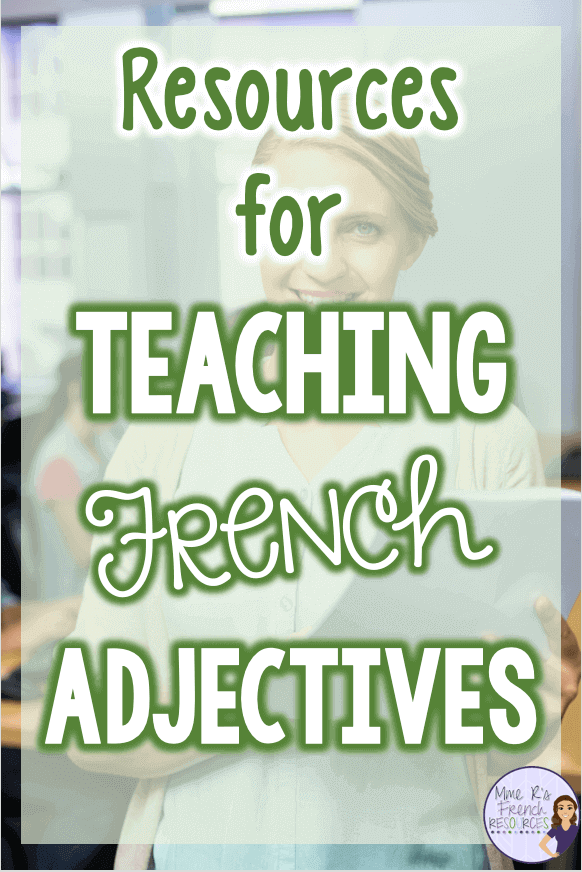
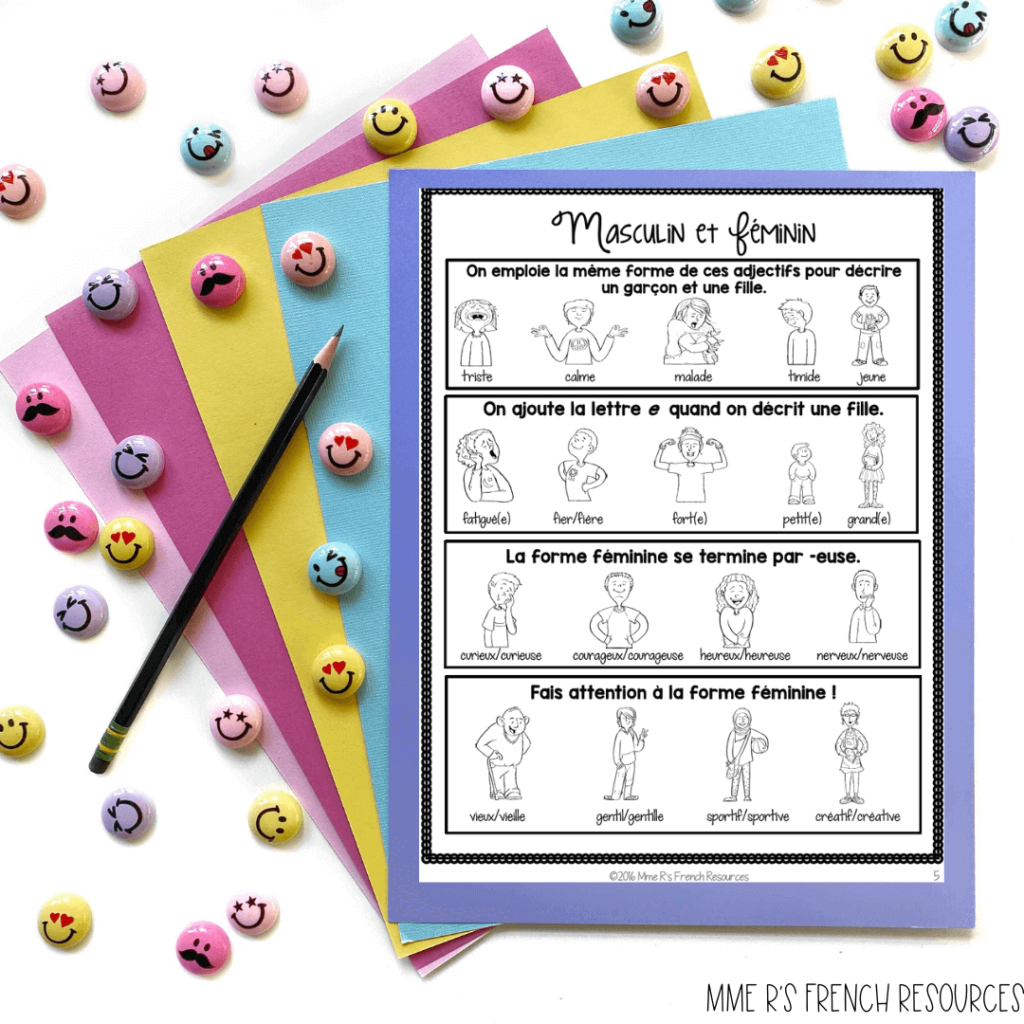
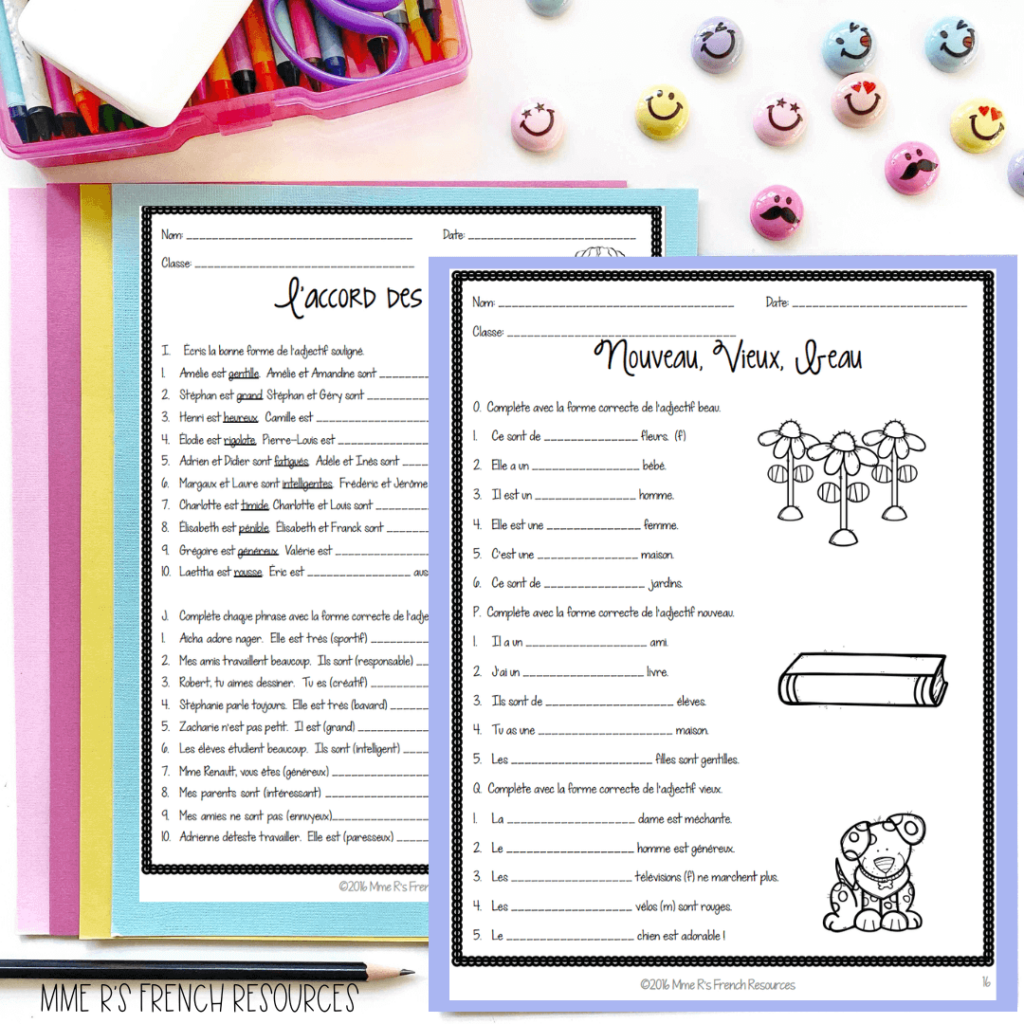
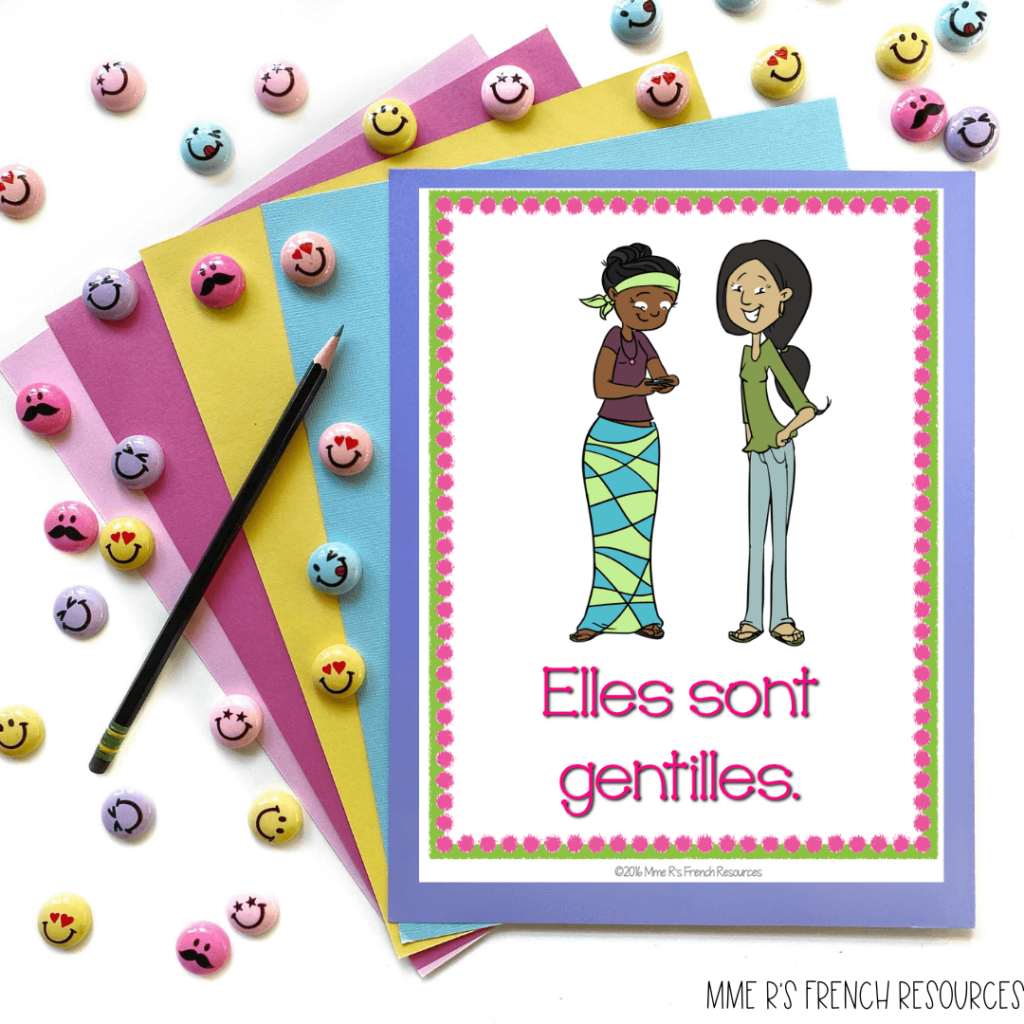
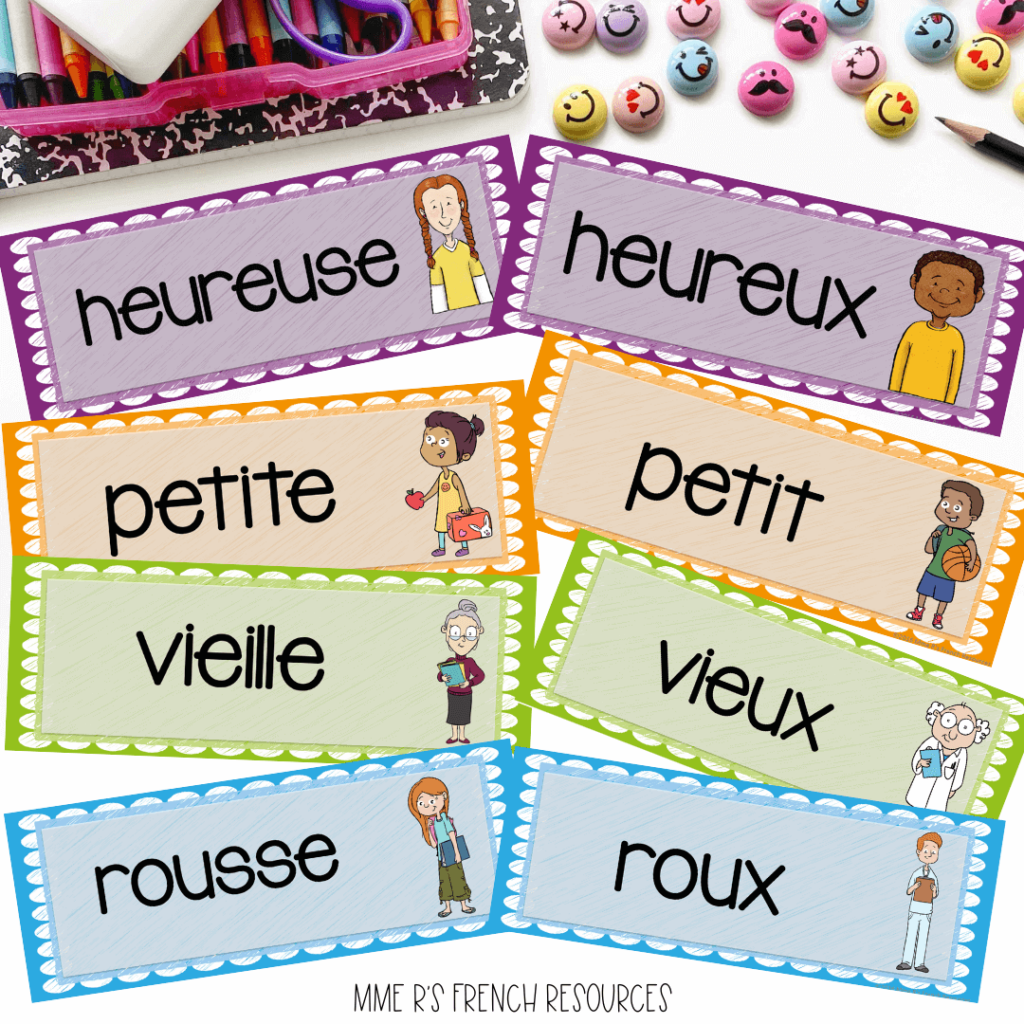
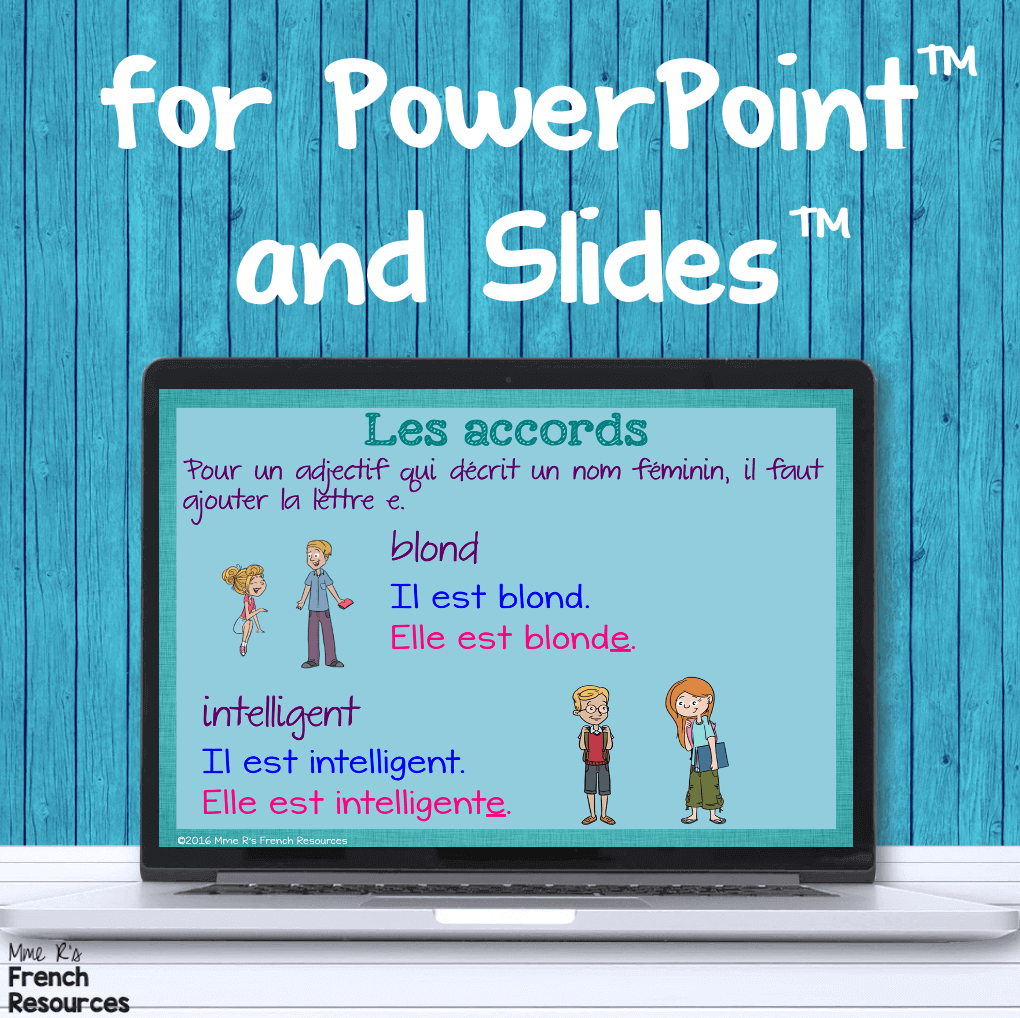
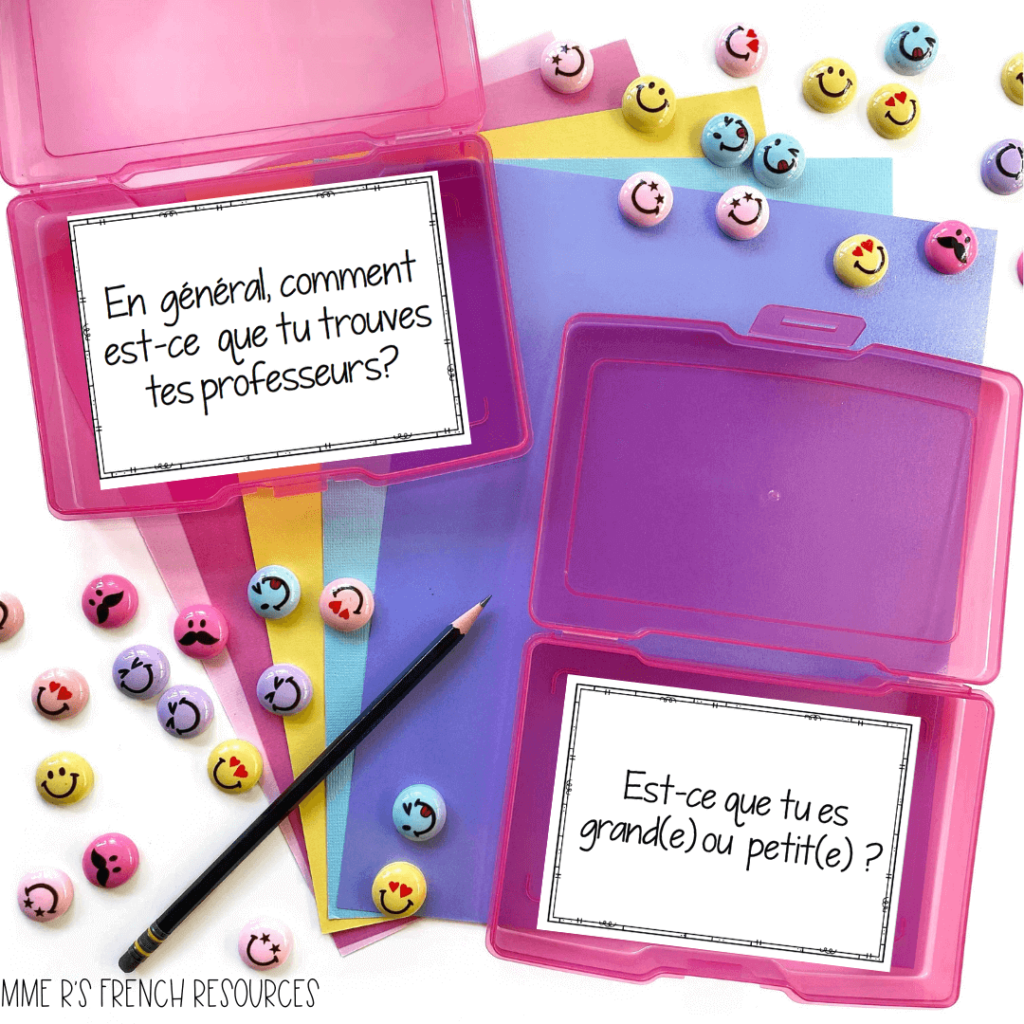
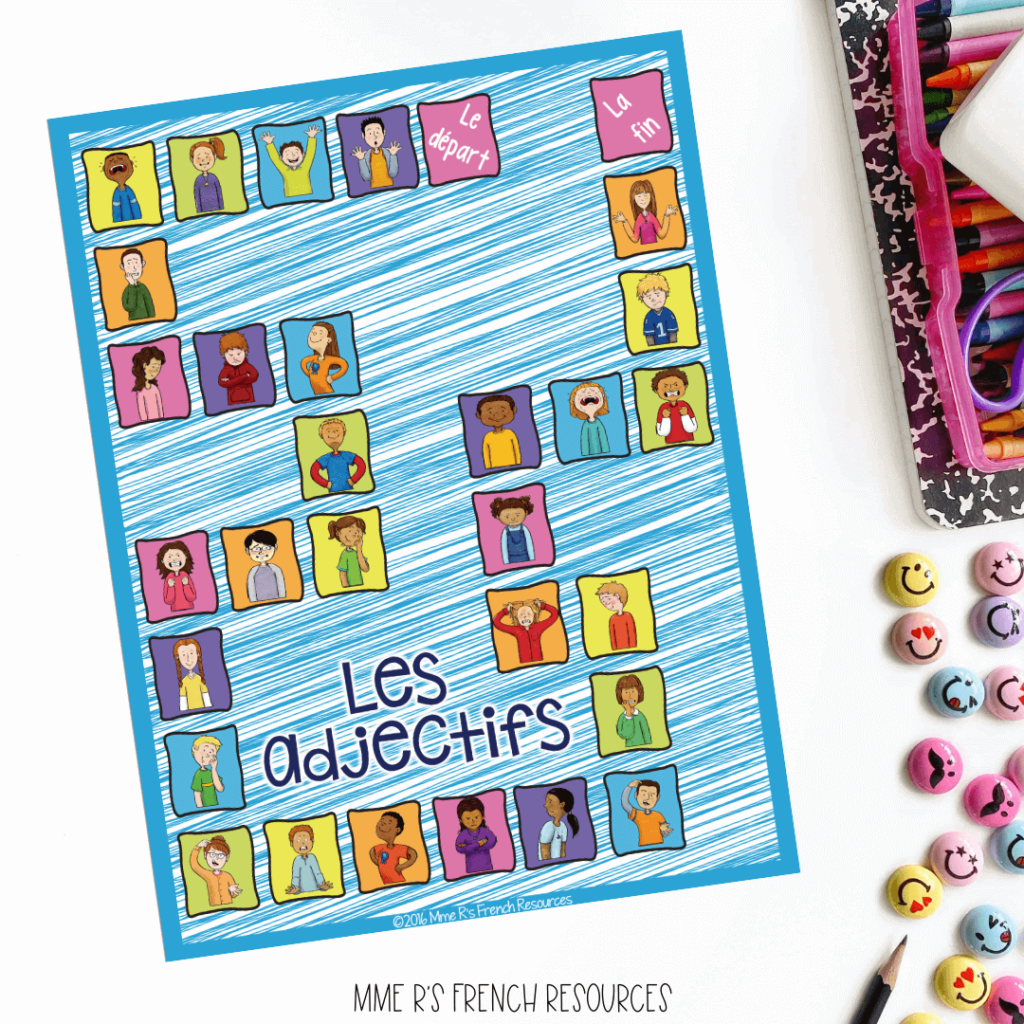
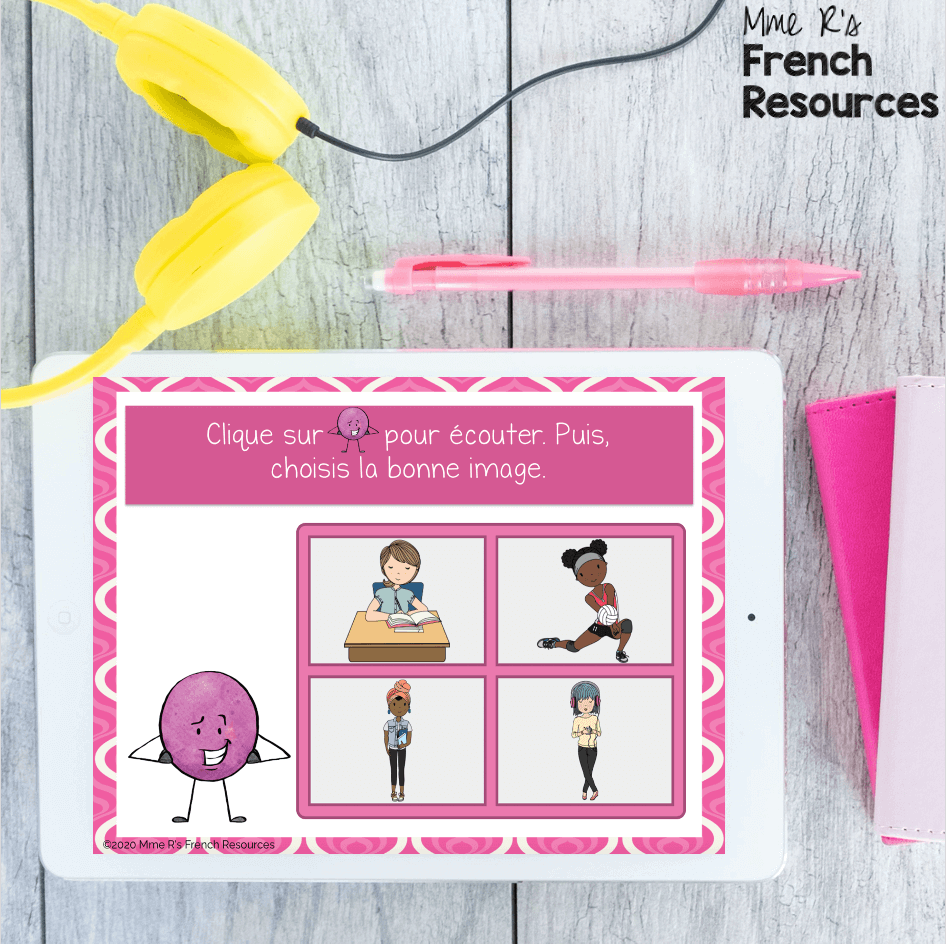
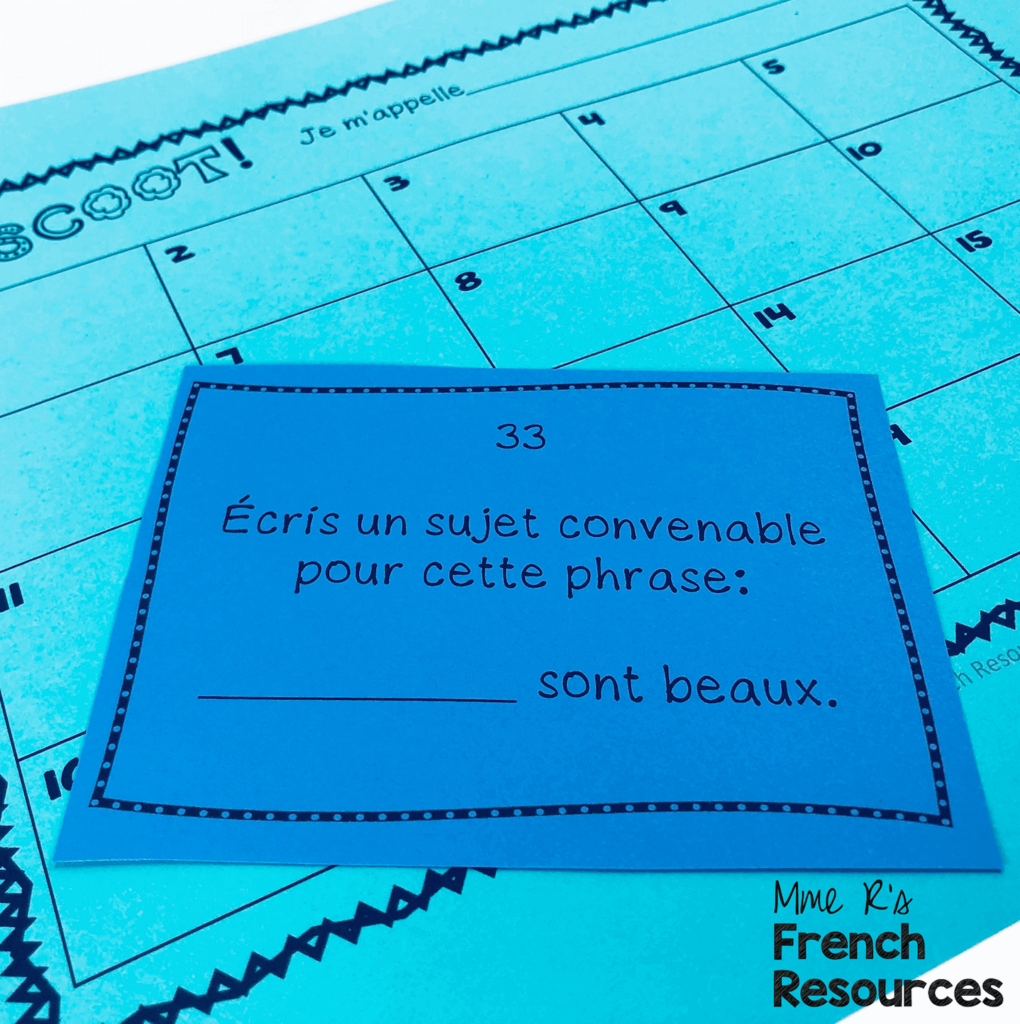
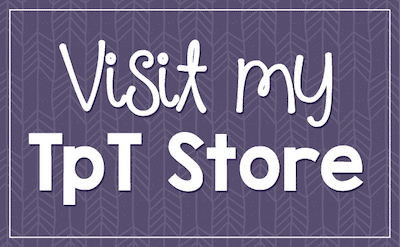
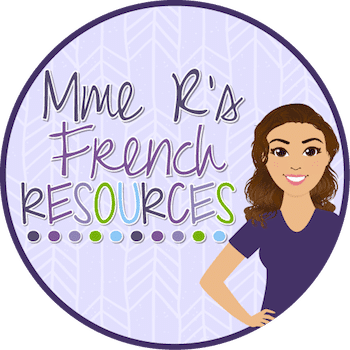
Teaching Little Leaders says
These look awesome! I would have loved to have been in your French class growing up 🙂
Ashley says
Thank you! I think having fun helps me be more effective. 🙂
Julie says
This looks like a fabulous unit!